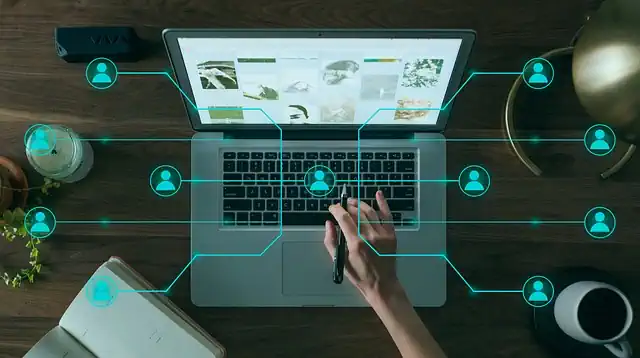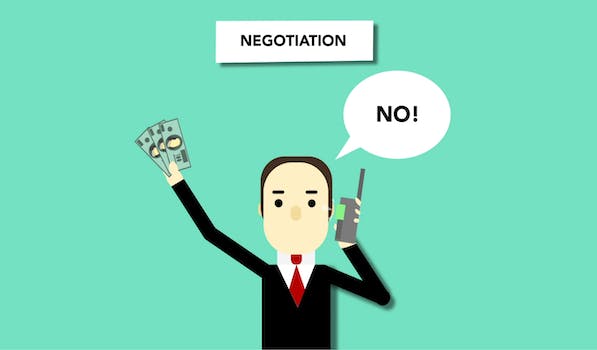How To Start A Business Email Greeting
“Crafting a professional and engaging email greeting for your business ventures.”
Introduction
When it comes to starting a business email, the greeting is the first impression you make on your recipient. It sets the tone for the rest of the email and can impact how your message is received. In this article, we will discuss some tips on how to start a business email greeting that is professional, appropriate, and effective.
Crafting the Perfect Business Email Greeting
Starting a business email greeting can be a daunting task, especially if you’re not sure where to begin. However, crafting the perfect business email greeting is essential for making a good first impression and establishing a professional tone. In this article, we’ll provide you with some tips and tricks on how to start a business email greeting that will leave a lasting impression.
First and foremost, it’s important to keep your greeting simple and concise. Avoid using overly formal language or complicated phrases that may confuse the recipient. Instead, opt for a friendly and professional tone that is easy to understand. A simple “Hello” or “Hi” followed by the recipient’s name is a great way to start your email greeting.
Next, consider the context of your email and tailor your greeting accordingly. If you’re emailing a potential client or business partner, a more formal greeting may be appropriate. On the other hand, if you’re emailing a colleague or someone you have an established relationship with, a more casual greeting may be appropriate. Consider the recipient’s position and relationship to you when crafting your greeting.
Another important factor to consider when starting a business email greeting is the tone of your email. Are you writing a formal business proposal or a casual follow-up email? The tone of your email should be reflected in your greeting. For example, if you’re writing a formal business proposal, a more formal greeting such as “Dear [Recipient’s Name]” may be appropriate. However, if you’re writing a casual follow-up email, a more casual greeting such as “Hey [Recipient’s Name]” may be appropriate.
It’s also important to consider the recipient’s name and title when crafting your greeting. If you’re unsure of the recipient’s title, it’s always best to err on the side of caution and use a more formal greeting such as “Dear [Recipient’s Name].” However, if you know the recipient’s title, it’s appropriate to use it in your greeting. For example, if you’re emailing a CEO, a greeting such as “Dear Mr./Ms. [Last Name]” may be appropriate.
Finally, don’t forget to proofread your greeting before sending your email. A simple spelling or grammatical error can detract from the professional tone of your email. Take the time to review your greeting and ensure that it’s free of errors.
In conclusion, starting a business email greeting doesn’t have to be a daunting task. By keeping your greeting simple and concise, tailoring it to the context of your email, considering the tone of your email, and taking the recipient’s name and title into account, you can craft the perfect business email greeting. Remember to proofread your greeting before sending your email to ensure that it’s free of errors. With these tips and tricks, you’ll be well on your way to making a great first impression and establishing a professional tone in your business emails.
Dos and Don’ts of Business Email Greetings

Starting a business email greeting can be a daunting task, especially if you are new to the business world. However, it is an essential part of any professional communication and can set the tone for the rest of the email. In this article, we will discuss the dos and don’ts of business email greetings to help you create a professional and effective message.
Dos:
1. Use a professional tone: Your email greeting should be professional and formal. Avoid using slang or informal language, as it can come across as unprofessional.
2. Address the recipient by name: Always address the recipient by their name, rather than using a generic greeting such as “Dear Sir/Madam.” This shows that you have taken the time to personalize the message and adds a personal touch to the email.
3. Use a clear subject line: Your subject line should be clear and concise, summarizing the purpose of the email. This helps the recipient to quickly understand the content of the email and prioritize their response.
4. Keep it short and sweet: Your email greeting should be brief and to the point. Avoid lengthy introductions or unnecessary information, as it can make the email appear cluttered and difficult to read.
5. Proofread your message: Always proofread your email greeting before sending it. Check for spelling and grammar errors, as well as any typos or formatting issues. A well-written and error-free email greeting shows that you are professional and detail-oriented.
Don’ts:
1. Use informal language: As mentioned earlier, avoid using slang or informal language in your email greeting. This can come across as unprofessional and may not be well-received by the recipient.
2. Use a generic greeting: Avoid using a generic greeting such as “Dear Sir/Madam” or “To Whom It May Concern.” This can make the email appear impersonal and may not grab the recipient’s attention.
3. Use all caps: Using all caps in your email greeting can come across as shouting and may be perceived as aggressive or rude. Stick to standard capitalization rules to avoid any misunderstandings.
4. Use emoticons or emojis: While emoticons and emojis may be appropriate in personal communication, they have no place in a professional email greeting. Stick to text-based communication to maintain a professional tone.
5. Use overly formal language: While it is important to maintain a professional tone, using overly formal language can make the email appear stiff and impersonal. Use language that is appropriate for the situation and the recipient.
In conclusion, starting a business email greeting can be a simple and effective way to set the tone for your professional communication. By following these dos and don’ts, you can create a professional and effective message that will grab the recipient’s attention and convey your message clearly and concisely. Remember to keep it short and sweet, address the recipient by name, and proofread your message before sending it. With these tips in mind, you can create a business email greeting that will help you to build strong and effective professional relationships.
Personalizing Your Business Email Greeting for Maximum Impact
Starting a business email greeting may seem like a small detail, but it can have a big impact on how your message is received. A personalized greeting can make your email stand out and create a positive impression on the recipient. Here are some tips on how to start a business email greeting that will make a lasting impression.
First, consider the tone of your email. Is it formal or informal? This will help you determine the appropriate greeting. For a formal email, use a more traditional greeting such as “Dear” followed by the recipient’s name. For a more informal email, you can use a more casual greeting such as “Hi” or “Hello.”
Next, consider the recipient’s name. If you know the recipient’s name, use it in the greeting. This shows that you have taken the time to personalize the email and creates a more personal connection. If you don’t know the recipient’s name, you can use a more general greeting such as “To Whom It May Concern” or “Dear Sir/Madam.”
If you are sending an email to a group of people, consider using a more general greeting such as “Good morning/afternoon/evening everyone” or “Greetings.” This shows that you are addressing the group as a whole and creates a sense of unity.
Another way to personalize your business email greeting is to include a reference to a recent conversation or event. For example, you could start your email with “It was great meeting you at the conference last week” or “Thank you for your email regarding the project.” This shows that you have a personal connection with the recipient and creates a more friendly tone.
If you are sending an email to someone you have never met before, consider including a brief introduction in your greeting. For example, you could start your email with “My name is [Your Name] and I am the [Your Position] at [Your Company].” This helps to establish your credibility and creates a more professional tone.
Finally, consider the overall tone of your email. Your greeting should be consistent with the tone of the rest of your message. If you are sending a formal email, your greeting should be formal as well. If you are sending an informal email, your greeting can be more casual.
In conclusion, starting a business email greeting may seem like a small detail, but it can have a big impact on how your message is received. By personalizing your greeting, you can create a positive impression on the recipient and establish a personal connection. Consider the tone of your email, the recipient’s name, and any recent conversations or events when crafting your greeting. With these tips, you can start your business email greeting with confidence and make a lasting impression.
The Importance of a Professional Business Email Greeting
Starting a business email greeting may seem like a small detail, but it can make a big impact on how your company is perceived. A professional email greeting sets the tone for the entire conversation and can help establish credibility and trust with your clients or customers. In this article, we will discuss the importance of a professional business email greeting and provide tips on how to create one.
First and foremost, a professional business email greeting shows that you take your business seriously. It demonstrates that you are professional, organized, and respectful of your clients’ time. A well-crafted email greeting can also help establish your brand identity and make your company more memorable.
When crafting your business email greeting, it’s important to keep in mind the tone you want to convey. Do you want to come across as formal and traditional, or more casual and approachable? This will depend on your industry and the type of clients you work with. For example, if you work in finance or law, a more formal greeting may be appropriate. However, if you work in a creative industry, a more casual greeting may be more fitting.
Another important factor to consider is personalization. Addressing your clients by name can help establish a personal connection and make them feel valued. It’s also important to use proper titles and honorifics, such as Mr., Mrs., or Dr., when appropriate.
When it comes to the actual content of your business email greeting, there are a few key elements to include. First, start with a greeting, such as “Dear [Client Name],” or “Hello [Client Name].” This sets a friendly and welcoming tone for the conversation.
Next, introduce yourself and your company. This can be a brief sentence or two that explains who you are and what your company does. For example, “My name is John Smith, and I am the CEO of XYZ Company, a leading provider of marketing services.”
After introducing yourself, it’s important to express gratitude and appreciation for your client’s time and business. This can be as simple as saying “Thank you for considering our services” or “We appreciate your business and look forward to working with you.”
Finally, end your email with a closing and a signature. A simple “Best regards” or “Sincerely” followed by your name and contact information is sufficient.
In addition to the content of your business email greeting, it’s also important to consider the formatting and design. Use a professional font and keep the formatting simple and easy to read. Avoid using bright colors or excessive graphics, as this can come across as unprofessional.
In conclusion, a professional business email greeting is an important aspect of establishing credibility and trust with your clients or customers. By taking the time to craft a well-written and personalized greeting, you can set the tone for a successful business relationship. Remember to keep the tone and content appropriate for your industry and clients, and always express gratitude and appreciation for their time and business. With these tips in mind, you can create a business email greeting that sets your company apart and helps you stand out in a crowded marketplace.
Examples of Effective Business Email Greetings for Different Situations
Starting a business email greeting can be a daunting task, especially if you’re not sure what tone to use or how to address the recipient. However, a well-crafted email greeting can set the tone for the entire conversation and leave a positive impression on the recipient. In this article, we’ll provide examples of effective business email greetings for different situations to help you get started.
Firstly, it’s important to consider the context of the email and the relationship you have with the recipient. If you’re emailing a colleague or someone you have an established relationship with, a more casual greeting may be appropriate. For example, “Hi [Name],” or “Hello [Name],” are both friendly and professional options.
On the other hand, if you’re emailing someone for the first time or in a more formal setting, a more formal greeting may be more appropriate. “Dear [Title] [Last Name],” or “Good morning/afternoon [Title] [Last Name],” are both respectful and professional options.
If you’re unsure of the recipient’s title or prefer not to use it, you can simply use their first name. However, it’s important to ensure that this is appropriate for the context and relationship. Using a first name in a formal setting or with someone you don’t know well can come across as too casual or presumptuous.
In some cases, you may need to address a group of people in your email greeting. In this situation, it’s important to consider the size of the group and the level of formality required. For a small group of colleagues or acquaintances, a simple “Hi all,” or “Hello everyone,” may suffice. However, for a larger or more formal group, it may be more appropriate to use a more formal greeting such as “Dear [Title]s,” or “Good morning/afternoon all,”.
Another important factor to consider when crafting your business email greeting is the tone you want to convey. Depending on the context and relationship, you may want to come across as friendly, professional, or somewhere in between. For example, if you’re emailing a potential client or business partner, you may want to strike a balance between professionalism and approachability. A greeting such as “Dear [Title] [Last Name],” or “Hello [First Name],” can convey both respect and friendliness.
If you’re emailing someone in a more casual setting, such as a colleague or friend, you may want to use a more informal greeting to convey a sense of familiarity. “Hey [First Name],” or “What’s up [First Name],” are both casual and friendly options.
Finally, it’s important to consider the purpose of your email and tailor your greeting accordingly. If you’re emailing someone to request information or ask a favor, a more polite and formal greeting may be appropriate. For example, “Dear [Title] [Last Name],” or “Good morning/afternoon [Title] [Last Name],” can convey respect and professionalism.
On the other hand, if you’re emailing someone to share good news or congratulate them on an achievement, a more casual and friendly greeting may be appropriate. “Hey [First Name],” or “Congratulations [First Name],” can convey a sense of excitement and positivity.
In conclusion, starting a business email greeting can be a challenge, but with the right approach, it can set the tone for a successful conversation. By considering the context, relationship, tone, and purpose of your email, you can craft a greeting that is both professional and approachable. Whether you’re emailing a colleague, client, or friend, a well-crafted greeting can leave a positive impression and set the stage for a successful conversation.
Conclusion
Conclusion: Starting a business email greeting is an important aspect of professional communication. It sets the tone for the rest of the email and can impact the recipient’s perception of the sender. To create an effective greeting, it is important to consider the audience, purpose, and tone of the email. A clear and concise greeting that is personalized and professional can help establish a positive relationship with the recipient and increase the chances of a successful outcome.






